Death on the high seas: The infamous pirate flag and its naval connection
A Portsmouth exhibition opening in April looks into the history of the Jolly Roger and its evolution over the decades
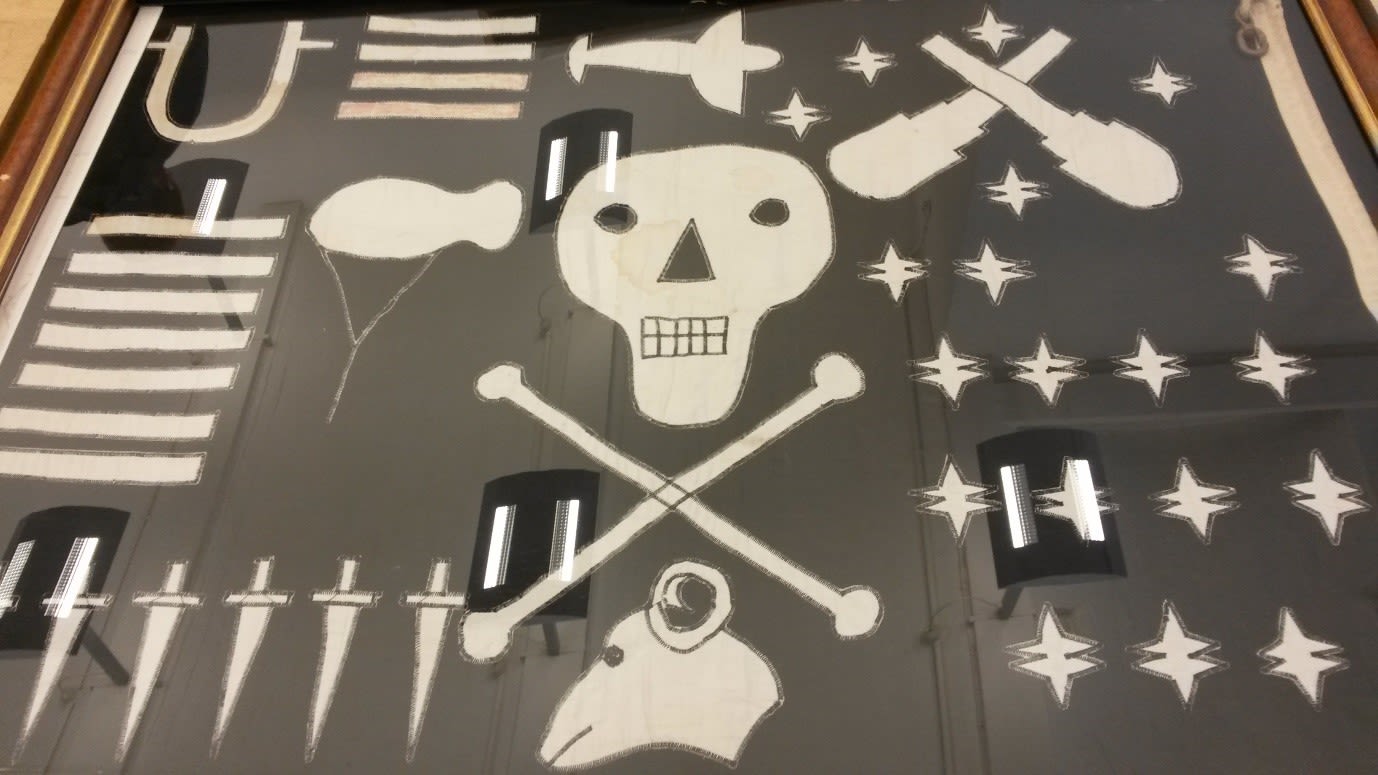
Once considered the terror of the seas, the flag typically associated with pirates took on a new meaning in the early 20th Century. Now an exhibition looks into the evolution of the infamous pirate icon. Amber Westley speaks with Alice Roberts-Pratt ahead of the exhibition opening.
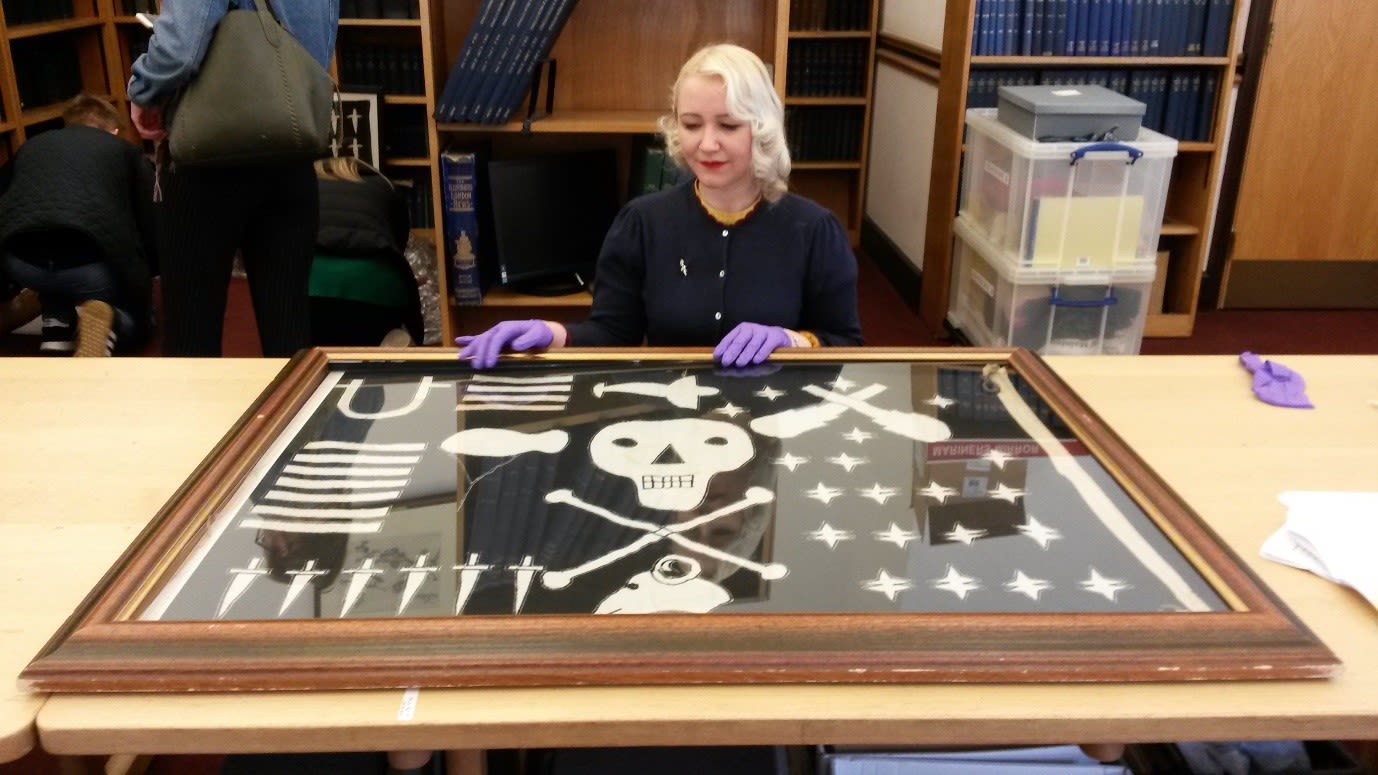
Alice Roberts-Pratt looks over the Jolly Roger of the HMS Torbay.
Alice Roberts-Pratt looks over the Jolly Roger of the HMS Torbay.
Used in protest by Royal Navy submarines, the Jolly Roger served as a visual record of what the boat had done, using symbols to show the combat a boat had seen.
The Royal Navy submarines’ use of the Jolly Roger stemmed from Sir Arthur Wilson’s comment in 1901 that submarines were ‘underhand, unfair and damned un-English’ and the navy should ‘treat all submarines as pirates in wartime ... and hang all crews’. As Admiral of the Fleet, Wilson was a figure of authority and in 1914 Lieutenant Commander Max Horton began flying the flag in jest of the comment, to commemorate successful patrols.
To celebrate the history of this tradition, still not approved by the Royal Navy but accepted, a special exhibition at The National Museum of the Royal Navy in Portsmouth Historic Dockyard will take place from April 6.
The ‘Jolly Roger: A Symbol of Terror and Pride’ is aimed at an audience interested in history, textiles or art and shows the evolution of the flag first known as the ‘joli rouge’, French for ‘pretty red’.
The shift in meaning of the widely recognized flag, from early days where it signaled no mercy would be shown, to the modern day use by Royal Navy submarines is charted in this exhibition.
Curated by Alice Roberts-Pratt, the Jolly Roger exhibition showcases some of the Royal Navy submarine flags, each with a different design, because the symbols hand-sewn onto the flags show what combat the boat has seen, but all have the iconic skull and crossbones at the centre.
Alice said her two favourite Jolly Roger flags from the collection going on show were HMS Sickle, because of ‘the story about Monte Carlo with the card’, during one the missions HMS Sickle was attacking a merchant ship and missed its target and instead broke the windows of the famous Monte Carlo casino, no-body was hurt but a card was added to the boat’s Jolly Roger to commemorate the occasion. HMS Smiley’s Jolly Roger where the skull ‘has a smile’. As the historians do not know the real name for this boat they have affectionately nicknamed it after the flag.
There are 15 Jolly Rogers in the exhibition. Alice said she ‘would love to have more’ but eight of the 15 were in need of conservation before being displayed. This is no small feat because Jolly Roger flags are large, some being 2 metres by 2 metres.
The oldest flag exhibited will be from the golden age of pirates, which is considered to be from the 1500s to the 1700s, with the flag coming from the latter part of the time frame. It is an authentic pirate flag, captured by the Royal Navy but belonging to Admiral Richard Curry and was blood red but time has caused the colour to fade. The newest flag in the collection was flown from a submarine which returned in 2011.
The flags were only flown when a submarine was coming back from its mission and are considered to be folk art. The submariners often made them as souvenirs to show what was achieved and the flags were added to throughout the mission. Some flags are hand-stitched, a skill which was ‘needed’ in the navy, or painted and some flags were coated in water-proof paint to preserve them. Alice emphasized ‘these flags have a design element and are not just about pirates’.
The Exhibition Space

But it is not just flags on display. Some items associated with submarines or pirates will also be showcased. One of these being a real pirate gun, captured by marines on-board the Sarawak in 1844, off the coast of modern-day Borneo.
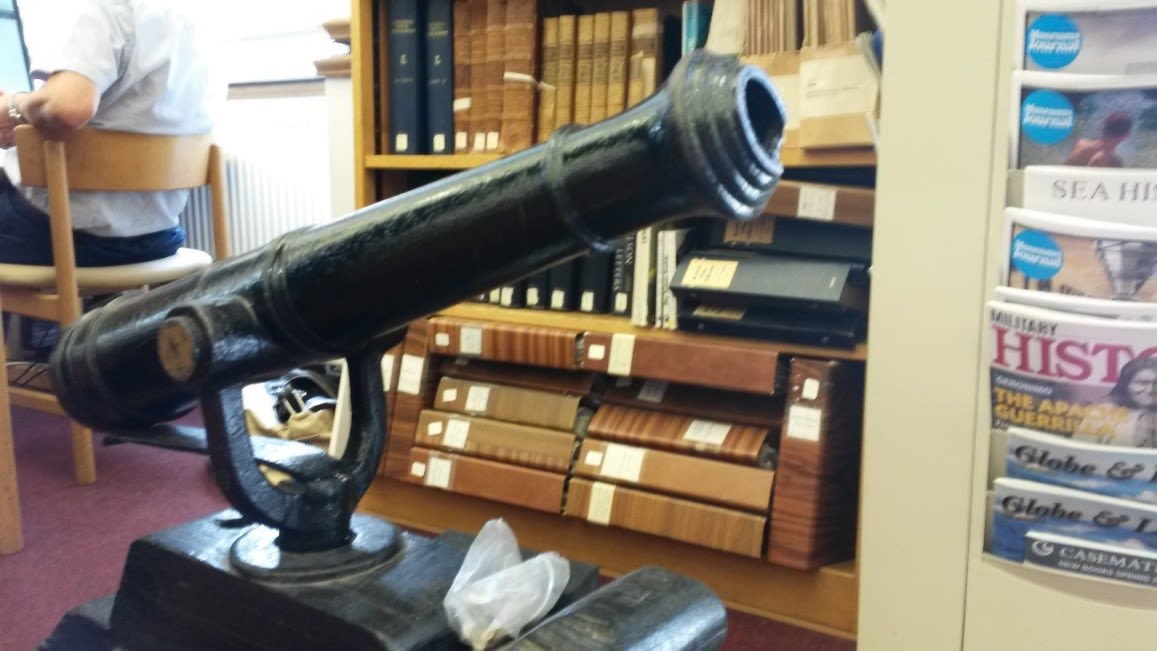
The Sarawak pirate gun, captured by the Royal Navy.
The Sarawak pirate gun, captured by the Royal Navy.
Another item exhibited is a night-dress playfully made for a member of The Women's Royal Naval Service, commonly referred to as Wrens, as a comment about how her husband was married to the service. As a Lieutenant Commander of the HMS Torbay, for which the Jolly Roger flag is also on display, Anthony Miers would have spent more time with the submarine than Lady Miers, so the nightdress on show would have been a comment from her fellow 1940s Wrens on the tradition of the Jolly Roger flag, to showcase a boat’s achievements.
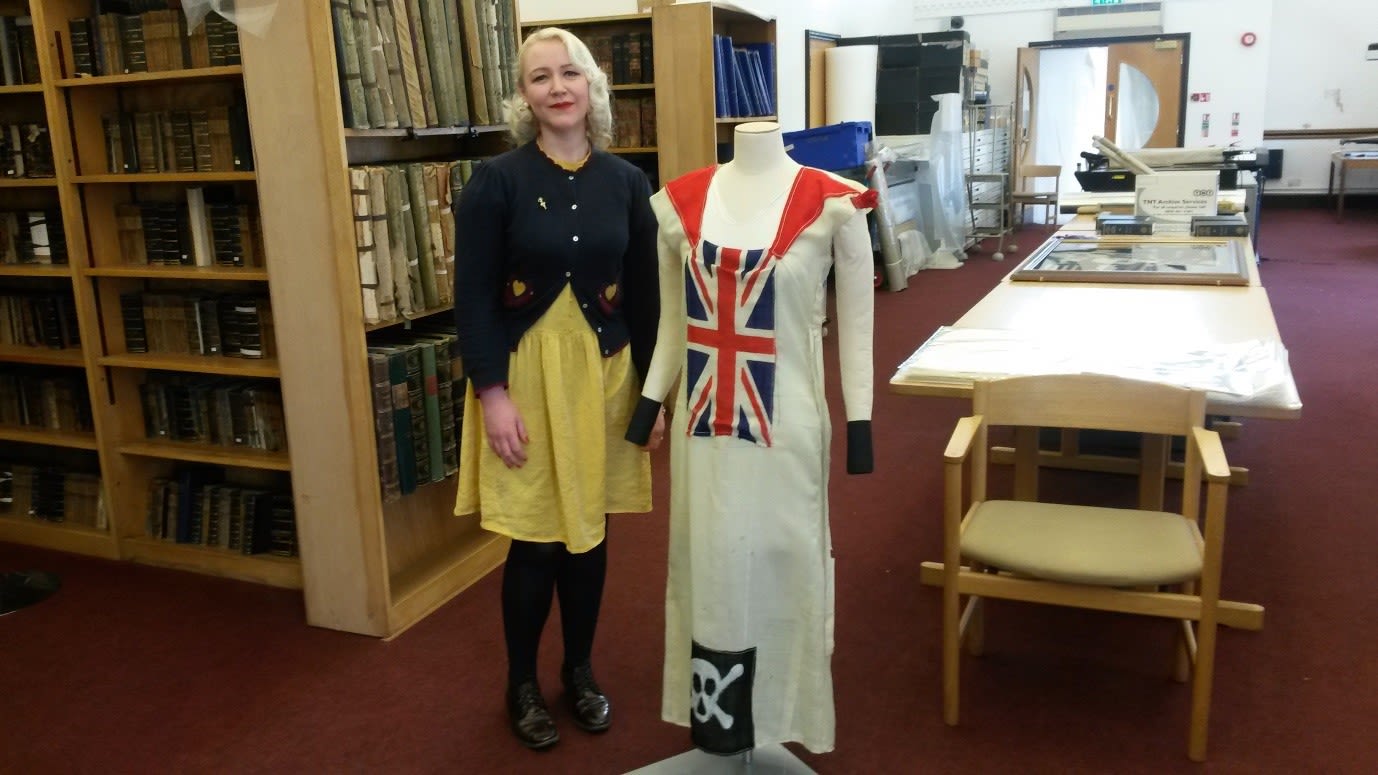
Alice poses with a nightdress made for a Wren in the 1940s.
Alice poses with a nightdress made for a Wren in the 1940s.
Jolly Roger Symbols
These are some of the symbols added to a submarine's Jolly Roger
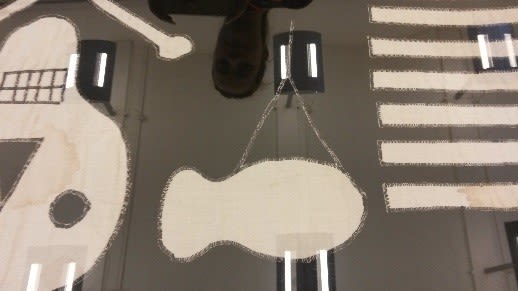
The exhibition ends with a look at modern piracy. This is not just about the Somali pirates, which the Royal Navy fought from 2011-16, as there are pirates across the globe, and there were 201 recorded pirate attacks in 2018, many of these involved drugs as the navy considers this to be piracy.
HMS Dragon first sailed to stop piracy in 1688 and took part in the Bombardment of Algiers as an effort to stop piracy and is now fighting piracy again, recently capturing £56 million of heroin, showing the similarities between piracy then and now. Alice said: ‘The movement of new wealth by the seas is what originally inspired piracy.’ This still rings true today as 95% of UK goods come from maritime trade and maritime piracy costs the global economy around $2 billion.
The exhibition also includes videos from Pathé of submarines and the Jolly Roger flags they fly and modern footage of the techniques used to combat modern piracy which include footage of speed boats used by the Royal Navy to chase after modern-day pirates. It will come to a close on August 28.
HMS Unbroken Jolly Roger Flag
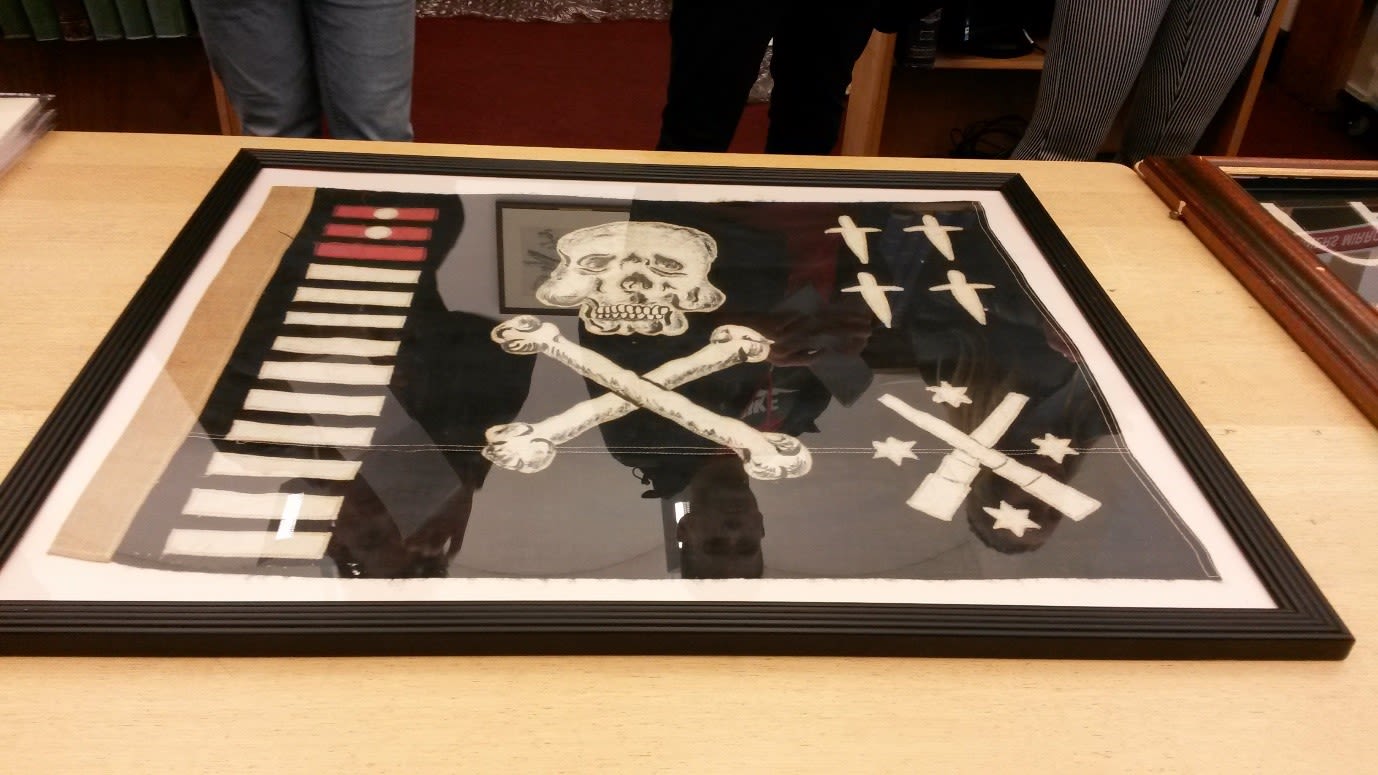
HMS Torbay Jolly Roger Flag

It also coincides with the internationally acclaimed ‘Horrible Histories® Pirates’ exhibition at the Dockyard which is a family exhibition based on the best-selling series by Terry Deary and illustrator Martin Brown.
Alice and a colleague worked for six weeks to research and create the exhibition. But she says: ‘Volunteers are needed to help set the exhibition up’. She also appealed to people to donate to the museum’s collection of Jolly Roger flags, if they find them.
Last year, Alice also curated the National Museum of the Royal Navy’s exhibition of tattoos. When asked which exhibition she preferred working on she said: ‘Tattoos was finished when I joined, whereas submarines was not and I really enjoy creating exhibitions from scratch. But tattoos was really fun for me as it is something I am into.’

